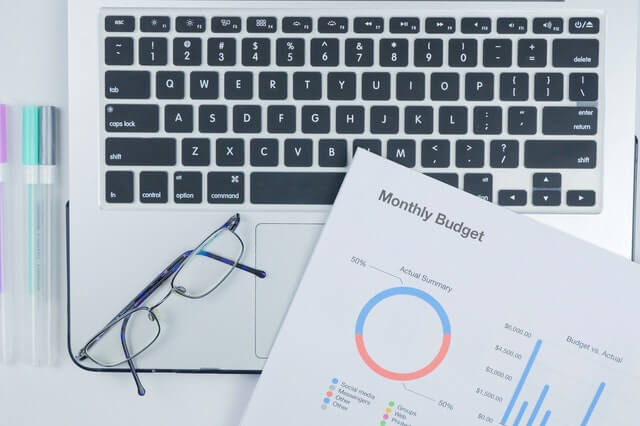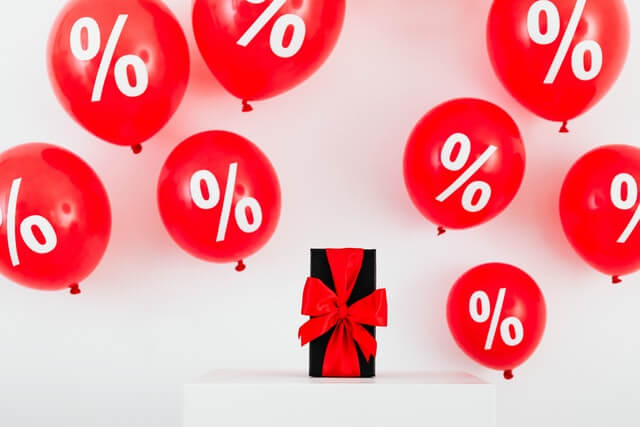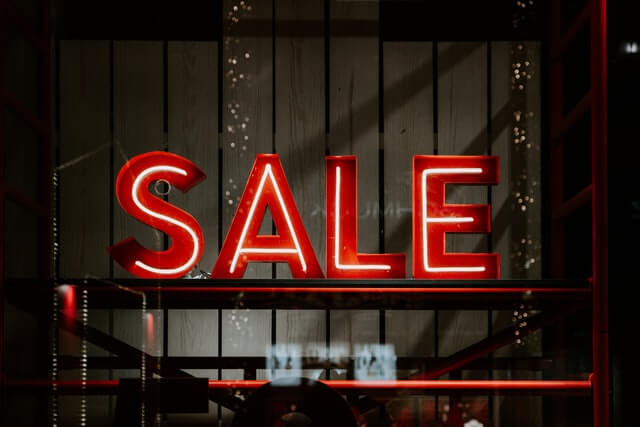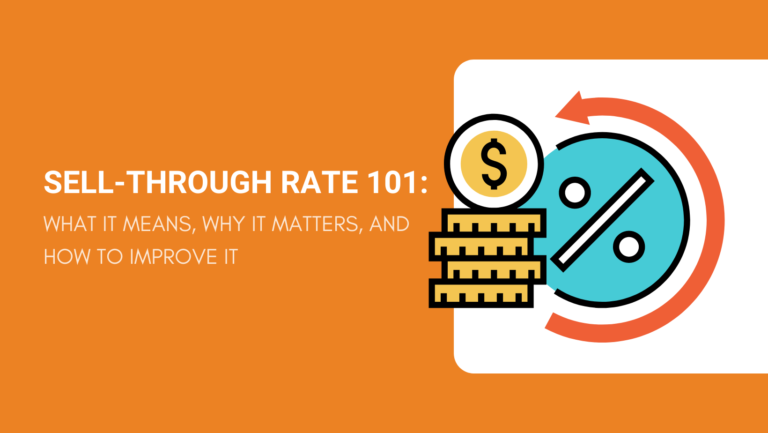The number of sales a business makes is often only used to measure profitability. However, sales data is equally crucial in making inventory management decisions and analyzing the overall performance of your business.
This relationship between sales and inventory management is, in formal business terms, known as a sell-through rate.
Yes, we can see you getting bored already. So, let’s put aside the jargon and keep things simple.
By the end of this blog, we will have defined what sell-through rate means and how to calculate it. We will also explore why it matters to your business and offer tips on how to improve your sell-through rate.
Let’s get to learning, shall we?

What Is a Sell-through Rate?
A sell-through rate (STR) is a ratio of the amount of inventory you sell compared to the amount of inventory you have received in a particular period. It is usually expressed as a percentage.
Take, for illustration, that you sell knife sets. Let us also assume that you ordered an inventory of 500 knife sets but only sold 350 knife sets; all within 3 months.
Your sell-through rate would be a ratio of your sales (350 knife sets) versus the inventory you received (500 knife sets) in those 3 months.
Why Is Sell-through Rate Important?
Sell-through rates are crucial when analyzing or making decisions about:
Inventory Management

A high sell-through rate indicates that the product in question is in high demand. In contrast, a low sell-through rate means that it takes longer to sell out the inventory of a product.
As such, the sell-through rate of a product can help you make better inventory management decisions.
For instance, if the STR of a product is high, it means that you need to replenish its stock regularly or order in bulk to meet demand. If the STR is low, it may be advisable to either:
- Order smaller batches of stock.
- Wait longer to order new stock so that you have enough time to clear the stock that you already have.
Product Demand/Popularity
Popular products tend to sell out fast or at a fairly consistent pace. Subsequently, if a product has a low sell-through rate, this may indicate that its demand in the market is low.
You may, therefore, want to consider stocking lower amounts of inventory or exploring other better-selling products.
However, it is also wise to consider STR over a longer period. This is because:
- Seasonal products have seasonal demand and only sell well at specific times.
- Customers can sometimes take longer to warm up to new products or private label brands.
Cost-Effective Business Management

STR data helps you make better decisions about inventory and the types of products you sell. This generally allows you to manage your business more cost-effectively because you can avoid investing your resources in the wrong things.
Your Sales Strategy
Changes in sell-through rates are a helpful diagnostic tool.
For example, if the STR of a product suddenly begins to dip, it indicates that something has changed and it is negatively impacting your sales. It could be that:
- Customers are responding to changes in price.
- The quality of your service or the product is no longer satisfactory.
- Your competitors are offering a better deal.
- The popularity of the product is waning.
On the flip side, if the STR of a product starts to rise, it shows that you are doing something right. Try to find out what it is and keep it up.
The key takeaway, in both scenarios, is that monitoring your sell-through rate can help you learn when to adjust your sales strategy.
How to Calculate Sell-through Rate

Some warehouse or inventory management systems come with a pre-installed sell-through rate calculator. This means that they automatically calculate and display your sell-through rate over time.
However, whether you do it manually or automatically, STR is calculated using the following standard formula:
Sell-through Rate = (No. of Units Sold ÷ No. of Units Received) × 100
Note that you can only consider the number of units sold and received within the same period.
Examples of Sell-through Rate
For illustration, let us consider an online knife store launched in January 2022. The store’s first batch of inventory comprised knives in the following varieties:
- 250 Pocket knives
- 250 Chef knives
- 250 Kitchen knives
- 250 Knife sets
By June, the store’s sales stood as follows:
- Pocket knives – 200 units
- Chef knives – 160 units
- Kitchen knives – 220 units
- Knife sets – 180 units
Based on this data we can work out the sell-through rates as indicated below:
- Pocket knives: (200÷250) × 100 = 80%
- Chef knives: (160÷250) × 100 = 64%
- Kitchen knives: (220÷250) × 100 = 88%
- Knife sets: (180÷250) × 100 = 72%
This means that kitchen knives were the best-selling items, followed by pocket knives. Knife sets came in third while chef knives sold the least within the 6 months.
Subsequently, the store could choose to:
- Order fewer chef knives.
- Order a slightly higher number of kitchen knives.
- Invest in more marketing (ads and promos) for chef knives and knife sets.
What Is a Good Sell-through Rate?

Sell-through rates are influenced by a myriad of factors such as:
- The niche – some niches, like apparel and personal care products, generally have a higher sell-through rate because consumers use them regularly.
- Familiarity – customers tend to buy or have more loyalty to brands that they are familiar with compared to new less-known brands.
- The duration – the STR of some products changes with seasons. Other factors such as product prices can also change over time and impact the sell-through rate.
- Consumer awareness – the sell-through rate of a product can change as consumers learn more about its benefits or risks.
In light of this, it is difficult to determine a good sell-through rate for all products. It is, instead, advisable to come up with an ideal sell-through rate on a case-by-case basis.
For instance, if you sell private label cosmetics, try to research the prevailing STR for cosmetics in your market. Take time to also learn why the sell-through rate is at that level and if there is anything you can do differently to improve it.
You can then use the information you obtain as a benchmark to set a target sell-through rate for your store.
How to Increase Sell-through Rate

Increasing your sell-through rate is simply increasing the number of product units that you sell within a set period.
For example, if you have been selling 300 units in 3 months, increasing your sell-through rate would mean working towards selling 500 units in 3 months.
Of course, every business desires high sales because they come with high profits. However, a high STR is also important for the following reasons.
- Minimizing warehouse costs – a low sell-through rate means that you have to hold inventory for longer and incur higher inventory management costs.
- Shelf-life – some products have a short shelf-life and it is thus important to find ways to sell them off while they are in good condition and avoid losses.
- Cash flow – products that take longer to sell can slow down your cash flow because they do not generate the expected profits you anticipated on time.
Now that we understand why a high sell-through rate is essential, let’s discuss how to achieve it, shall we?
Create Consumer Awareness

Customers can only buy from you if they know about your store and its products. So, do not hold back on advertising to increase your visibility and create awareness among customers.
As you market your store, ensure that you highlight its advantages. These could include factors such as:
- Fast delivery
- Outstanding packaging
- Great prices
- Convenient payment methods
- A customer-friendly shopping experience
On the other hand, as you market the products, emphasize:
- The uses and benefits of the products
- The quality of the products
- Product authenticity
Aim for advertising platforms that are relatable to your target market. Using influencers, for example, can work across different demographics as long as you pick the right person for the job.
Social media marketing is also a prime choice because you can target customers based on age, interests, and location. Both of these methods also allow you to include links to a product or your store so that customers can buy on the spot or bookmark it for later.
Sell on More Channels

Selling on more channels gives you access to a wider consumer base. This, in turn, gives you a higher chance of making more sales and a higher sell-through rate.
In practical terms, this means that if you only run a brick-and-mortar store, it is ideal to also start selling online. Similarly, if you have an online store, try to diversify to other platforms such as Facebook, Instagram, Amazon, Etsy, and more.
That said, the goal here is not to have a presence on every channel. Do your research and perform a cost-benefit analysis of selling on different channels. Use your findings to then choose the best platforms to sell on.
Evaluate Seasonality
Evaluate the demand for products before you start selling or dropshipping them.
If their sales spike during certain times of the year and then fall into a prolonged slump, it means that their demand is seasonal. On the contrary, if their sales remain relatively steady, it means that their demand is regular.
Seasonal demand is not necessarily a bad thing. However, it means that your sell-through rate for such products will be low when their demand falls.
It would, therefore, be better to only stock such products in the right season so that you can enjoy the high STR around that time.
Product Kitting

Product kitting entails creating packages that combine products with a high sell-through rate and products with a low sell-through rate.
Let’s break that down in a practical example for better context.
Say, for instance, that you run an apparel store where jeans sell better than shirts. Product kitting, in this scenario, would mean creating offers such as:
- For every pair of jeans that a customer buys, they can also enjoy a 50% discount on one shirt.
- A bundle where a pair of jeans is packaged together with a shirt and both are sold at a reduced bundle price.
The goal here is to use the popularity of one product to boost the sell-through rate of a less popular product.
Sales and Promos

Sales and promos can increase your sell-through rate in the short and long run.
In the short run, sales and promos entice customers to buy from your store because they can get products at cheaper prices. So, for as long as you have the sale running, they will likely keep buying and your sell-through rate will be high.
However, during this short-run sale, customers get to interact with your business and even try out new products that they would not ordinarily buy.
If their experience is positive, most of them will probably keep buying from you even after the sale ends. Subsequently, you would have a higher sell-through rate going forward than you did before the sale.
Sell-through Rate vs Inventory Turnover

A sell-through rate (STR) compares how much inventory you sell versus how much inventory you received during a set period.
Inventory turnover (IT), on the other hand, measures the rate at which your business sells off a batch of inventory within a specific duration.
A high rate of inventory turnover indicates high sales but it could also show that you are ordering lower inventory than your business requires. A lower inventory turnover, however, shows low sales or that you are ordering more inventory than is optimal.
Inventory turnover is calculated as follows:
Inventory Turnover = (Cost of Goods Sold ÷ Average Inventory) × 100
Average inventory = (Starting inventory + ending inventory) ÷ 2
Example of Sell-through Rate Vs Inventory Turnover
For illustration, say that you order 500 sets of craft supplies to sell on Etsy.
Your sell-through rate indicates how many craft supplies you can sell in a month compared to the 500 sets that you originally ordered.
Meanwhile, your inventory turnover measures how long it takes you to sell out the 500 sets of craft supplies and, by extension, how many times you needed to restock to meet demand within that month.
Learning Tip: Notice that STR focuses on the number of units sold while IT focuses on the speed at which you sell and replenish an entire batch of inventory and not just the sale of individual units.
FAQs about Sell-through Rate
What Is a Good Sell-through Rate on eBay?
There is no definitive answer to this question.
Most pundits state that an STR of 60% or 70% is great. However, the reality of business is more complicated than that, proving such answers to be misleading.
Take, for example, that you have one seller selling antique rugs and another selling board games. Their product niches, pricing, target markets, and other factors are worlds apart. It is, therefore, not plausible to compare their sell-through rates.
What Is FBA Sell-through Rate?
Your FBA sell-through rate is:
No. of units sold and shipped from your Amazon FBA store ÷ Average no. of units of your inventory that Amazon had in its warehouse
Amazon calculates your FBA sell-through rate based on a period of 90 days. The average number of inventory units is calculated as a mean of the inventory that you had in stock on the 30th, 60th, and 90th days.
Is a Sell-through Rate the Same as a Sales Conversion Rate?
No, it is not.
A sell-through rate is a ratio of how much inventory a business sells within a particular duration.
On the other hand, a sales conversion rate measures the percentage of potential customers that you can persuade to buy from your store.
To put it in context, if 40 customers inquire about your products but only 20 of them buy from you, your sales conversion rate is 50%.
In Conclusion
So, there you have it. A sell-through rate is not as complex as it sounds. Nevertheless, it is worth monitoring so that you can diagnose problems in your business early enough and make the necessary changes swiftly.
At NicheSources, we understand how important it is to achieve a healthy sell-through rate. We thus provide our clients with tailor-made solutions to help them improve their STRs.
You can count on us to source products that would have good STRs in your market or improve your product branding to boost your marketing efforts. We also source goods at wholesale rates so that you can sell at fair prices or even run promos.
Ready for better sell-through rates? Send us a brief of your requirements and request a free quote to get started.

